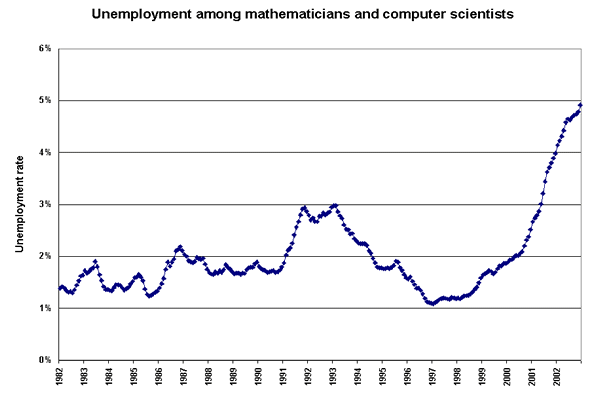Much discussion around the new economy has maintained that workers with information technology (IT) skills are largely insulated from the ill winds of recession. But the figure below shows that joblessness among some of the IT elite—mathematicians and computer scientists—currently stands at its highest level since the Bureau of Labor Statistics started collecting these data in 1982.

With the implosion of the high-tech sector beginning in 2000, the unemployment rate for this group climbed sharply from a very low level around 1% in the latter 1990s to around 5% at the end of 2002. Though this level is below the country’s overall unemployment rate of 6%, the 4-point increase in unemployment among these skilled workers is twice that of the 2-percentage point increase that occurred at the same time in the overall rate.
The magnitude of the increase among these workers is further evidence of two characteristics of the current labor market. First, despite the fact that the economy was widely thought to be in recovery throughout 2002, job prospects clearly worsened for even highly skilled workers. Second, this trend in the figure underscores the broad-based nature of a jobless recovery: its impact is being felt by workers throughout the occupational scale.
Data notes: The figure shows the trend in the unemployment rate for persons in the math and computer science occupation. The trend is extracted using a structural time-series model to decompose the series into its various components-trend, seasonal, and cycle. In this decomposition, the trend includes a stochastic term to capture some of the shorter term movements in the series.
This week’s Snapshot by EPI economist Jared Bernstein.
